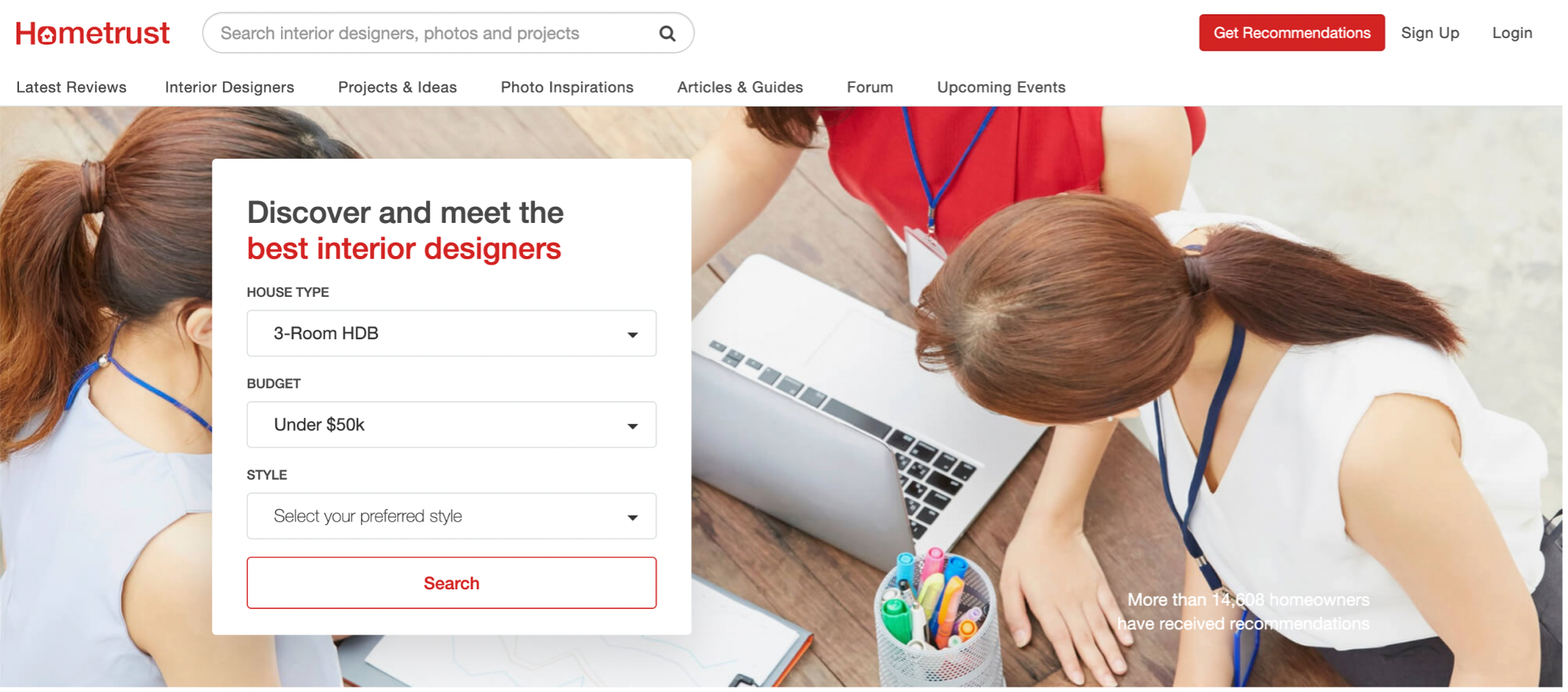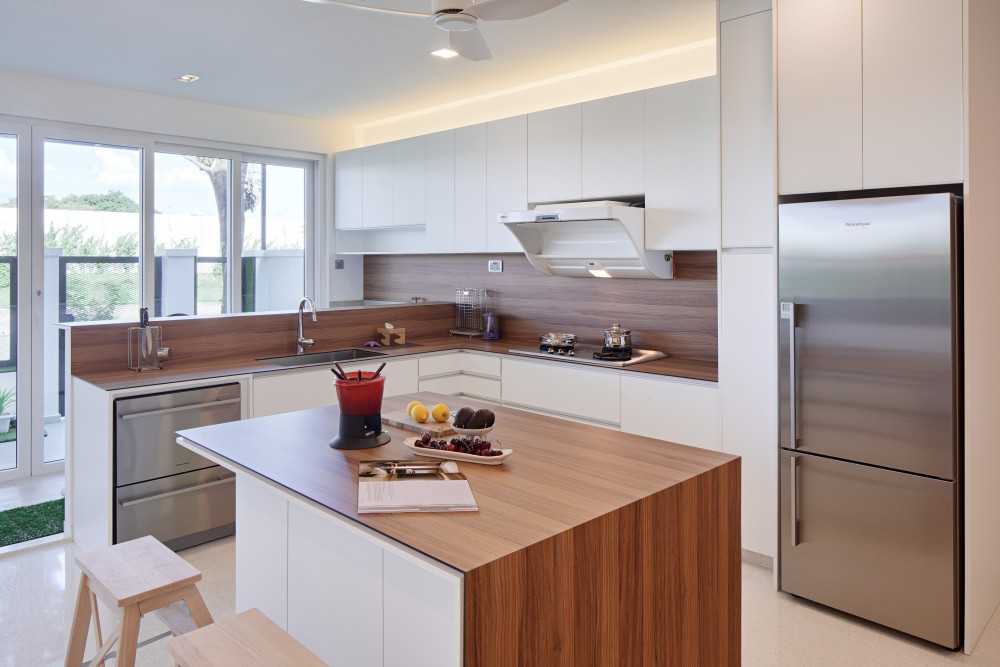A Guide To Building Your Online Reputation For Interior Design Companies
Interior design companies can benefit greatly from a strong online presence and a well-defined branding strategy.
If you’re working in an ID firm, it’s important to leverage the power of the internet in order to build your reputation, and attract new clients.
In this guide, we’ll suggest several marketing and branding strategies that ID firms can use to build their reputation online. Read on to find out more!
1. Build And Optimize Your Website
In this day and age, websites are no longer a nice-to-have – they’re a must-have.


It’s common for homeowners to research ID firms and look up their portfolios before deciding if they want to get in touch with them. As such, you’ll want to have a proper website set up, where you can share more information about your company, and also showcase your portfolio.
On your website, make sure to include high-quality images of your work, as well as testimonials from satisfied clients. It’s also a good idea to optimize your website to allow it to load quickly on both desktop and mobile.
How do you do this? One low-hanging fruit that’s easy to tackle is to compress your images. You’ll probably have many images that need to load on your site (especially on your portfolio page), and if you don’t compress your images, this can heavily affect your site speed.
2. Create High Quality Blog Content
Blogs and articles are a great way to establish yourself as an authority in the interior design industry.
In order to build thought leadership, and establish yourself as an expert in the ID space, come up with a content strategy, and start creating content that’s informative, engaging, and relevant to your target audience.


To start off with, try posting one blog post per week. Once you get used to the process, you can streamline your workflow and think about expanding to two or three posts per week.
If you’re not sure what to post about, look at your competitors’ sites for inspiration. Because of the sheer amount of information that there is in this space, you can write about anything under the sun.
To get you started, here are some blog post ideas:
- Tips and tricks for creating a specific type of room or space (e.g. living room, kitchen, bathroom)
- Incorporating sustainable materials and practices into home design
- Maximising functionality and design in small spaces
- Designing on a budget
- Home office design and productivity
- Current home design trends and predictions
- Designing for entertaining
- Storage solutions for the home
- Multi-purpose room design
- Color schemes and how to use them effectively in home design
- DIY home renovation and design projects
- Outdoor living spaces and garden design
- Combining different design styles in a cohesive manner
- Accessorising and decorating to complete a room design
Now, as you create your blog posts and other content, you’ll have to keep Search Engine Optimization (SEO) in mind.
The goal of SEO is to increase your website’s visibility in search results, drive more organic traffic to your site, and ultimately increase your visibility and credibility in your industry.
There are several strategies you can use with SEO, but to start off with, just focus on optimizing your blog posts for SEO. Here’s how you can achieve that:
- Use keywords in the title: Use keywords that are relevant to your topic and that people are likely to search for. Make sure the title is interesting and attention-grabbing.
- Use keywords in the content: Use keywords throughout the post, but make sure to use them naturally and avoid keyword stuffing. Use variations of the keywords and use synonyms where necessary.
- Optimise images: Use descriptive file names and alt tags for images in the blog post. This will help search engines understand the context of the images and potentially drive more traffic to your website.
- Use headings and subheadings: Use headings and subheadings to break up the content and make it easier to read. Use keywords in the headings and subheadings to make them more SEO-friendly.
- Use internal and external links: Link to other pages on your website, as well as to relevant pages on other websites. This will help search engines understand the context of your content and it will also increase the time people spend on your website.
- Optimize meta tags: Use a plugin to add a meta description to the blog post. Keep it under 155 characters and use keywords in it.
- Use schema markup: Use schema markup to add structured data to the blog post. This will help search engines understand the context of the content and may result in rich snippets in search results.
- Share on social media: Share the blog post on social media platforms like Instagram, Pinterest, and Facebook. Use relevant hashtags to increase visibility.
3. Use Social Media To Your Advantage
Social media platforms such as Instagram, Facebook, and TikTok are great tools for promoting your interior design business. Use these platforms to showcase your work, connect with potential clients, and build a community around your brand.


If you’re wondering which is the best social media site to invest your time and effort in, it really boils down to the type of clientele that you’re trying to attract.
If you specialize in BTO projects, for example, you’ll probably want to attract young couples in their 20s or early 30s. As such, Instagram and TikTok may be more relevant for you.
On the flip side, if you specialize in high-budget renovations for landed properties, your clients will probably skew older. In this case, you’ll want to focus on Facebook, which is still the social media platform of choice for those in their 40s or older.
For those who are trying to grow on social media, and attract more customers via social media, keep in mind that your content doesn’t have to be 100% polished.
What do we mean by that? Social media isn’t like other channels – it’s a lot more casual, and the point of social media is to humanize your brand, and connect with your audience in a genuine, authentic manner.
So, for instance, you might only showcase professionally-taken photos on your website because you want to maintain a certain brand image. On social media, however, you should share a wide range of content, including more casual content like behind-the-scenes photos.
This allows your audience to understand your process better, which will build up trust over time.
One last tip on social media: don’t just monitor your growth by looking at your number of followers, or the Likes on your posts. That aside, you’ll also want to gauge how much of your social media activity translates into actual leads or customers for your ID firm.


One common way of doing this is to run promotions with a specific promocode tied to it. For example, you can share a promocode such as “tiktok10” with your followers on TikTok, telling them that they can use this promocode to get 10% off a specific service.
From here, just monitor how many “redemptions” of the promocode you get – this will tell you how many of your leads came from social media.
This is also a good way of figuring out which social media channel you should invest more time or effort into.
For example, say you’re posting content on both TikTok and Instagram. Your TikTok might get more views and reach, but if you realize that your Instagram promocode brings you more leads than your TikTok promocode, this clearly shows you that Instagram attracts higher-quality traffic.
Finally, for those who don’t want to run promotions or campaigns, there’s an alternative method you can use to gauge your social media performance. As you receive enquiries from new leads, simply ask them how they got to know you – was it through a Google search, via online platforms, or via social media?
4. Use ID Platforms Such As Hometrust
Platforms like Hometrust provide a platform for designers to showcase their work, services and increase their visibility to potential clients.


On top of that, these ID platforms also allow interior designers to easily generate leads and connect with potential clients.
Think of it from the homeowner’s perspective – there are so many ID firms out there, and it simply isn’t feasible for homeowners to search for ID firms on Google, and look through these firms one by one.
Instead, many homeowners use aggregator sites like Hometrust. With Hometrust, they can easily filter ID firms based on certain criteria, compare different ID firms, and reach out to ID firms.
Of course, homeowners may do more research on Google and/or look at the ID firm’s website before deciding to reach out. That’s why it’s also important to build and optimize your website, like we mentioned earlier.
However, ID platforms are typically the first point of connection between homeowners and ID firms, so it’s important to optimize your listing on ID platforms, and use these hand-in-hand with your website. Don’t just focus solely on your websites, and neglect ID platforms as an additional source of leads!
Here are a few tips on how to create and optimize your profile on ID platforms:
- Create a professional profile: Create a comprehensive profile that showcases your portfolio, services, and contact information. Make sure your profile is up-to-date and includes high-quality images of your work.
- Build a portfolio: Build a portfolio of your work on the platform, featuring before and after images, detailed descriptions, and the products and materials used in the projects.
- Showcase your services: Highlight the services you offer and how you can help clients achieve their design goals.
- Get reviews: Encourage your clients to leave reviews on your profile. Positive reviews can help build trust with potential clients and increase your visibility on the platform.
- Use the platform’s features: Utilize the platform’s features like project management, client communication, and lead generation to streamline your business and increase your productivity.
5. Leverage The Power Of Video
For IDs, video is a powerful tool for promoting your business online. You can use it to showcase your work, give virtual tours of your projects, or create tutorials on interior design topics.


Here are some tips on filming videos:
- Plan your content: Before filming, have a clear idea of what you want to say and how you want to say it.
- Lighting: Make sure the lighting is good so that the video is well-lit and easy to see.
- Audio: The sound quality of your video is just as important as the visual quality. Use a good microphone and make sure there is minimal background noise.
- Camera: Use a high-quality camera to ensure the best possible video quality.
- Framing: Pay attention to the composition of your shots and make sure your subject is in the right place in the frame.
- Editing: Edit your video to remove any unnecessary footage, and add music or other audio if desired.
- Optimize for the platform: Different social media platforms have different video aspect ratios, resolution and length. Keep these in mind while filming and editing your video.
6. Ensure That Your Branding Is Consistent
If you want to build a strong brand identity, you need to ensure that your branding should be consistent across all of your online platforms.
Here are some tips to keep in mind:
- Use consistent elements: Use the same logo, colors, and typography across all of your marketing materials, including your website, social media, and print materials.
- Maintain a consistent tone of voice: Use the same language, messaging and tone across all your communication channels.
- Train employees: Make sure all employees understand your brand’s messaging and visual elements, and that they know how to present the brand consistently. If you’d like, you can even develop a brand guide, which is a document that outlines your brand’s visual and messaging elements, such as logo, color palette, typography, and tone of voice.
A Final Word On Building Your Online Reputation
When it comes to building your online reputation, here’s what you need to keep in mind: it’s not just about how good you are at your job – it’s about whether your potential clients know how good you are at your job.
By following these strategies, you can build their reputation online and establish yourself as a leader in the industry. This will translate into more leads, more sales, and more revenue for your ID company.
Want to gain more visibility and reach out to more potential clients? Use Hometrust to connect with homeowners searching for an ID today.
Want to connect with new homeowners?
Be a Hometrust Pro firm.
Endorsed by the top ID and renovation firms in Singapore, Hometrust Pro’s marketing solution and tools help your company connect with new homeowners.




